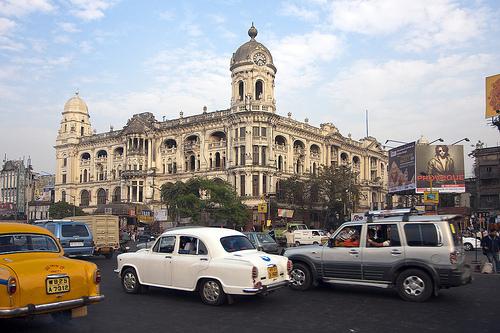

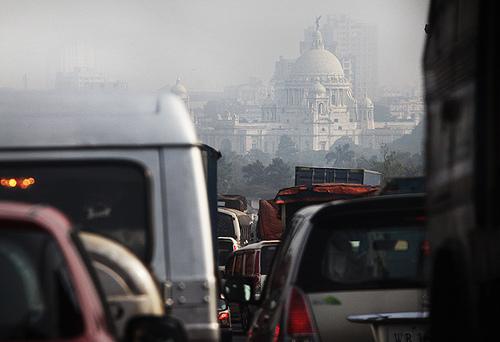
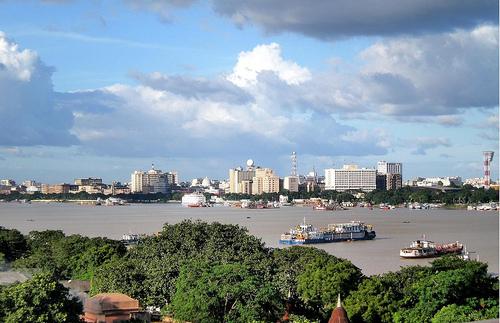
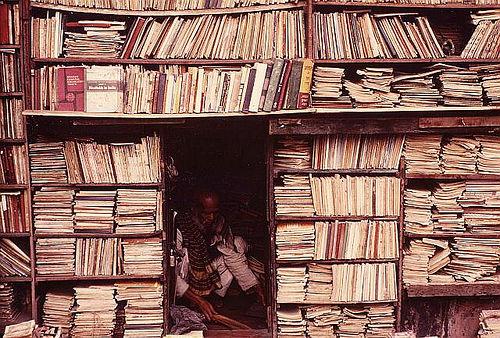
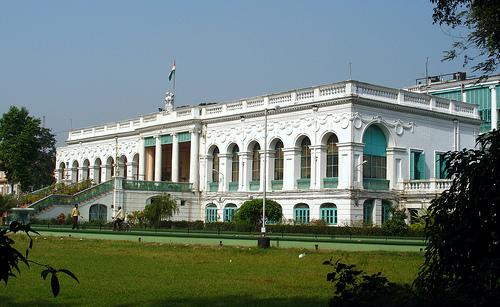
Everything that is Royal and soaked in Heritage
Unlike the previous settlers of India, who had come by land through Khyber Pass, overlooking the world’s highest mountain range – The Himalayas – the British came by sea. Commissioned by the Royal Charter, the fleet of Job Charnock harboured at the marshy bayou of Sutanuti, on 24 August 1690, eventually, to develop a classic colonial economy and the second city of the British Empire – Calcutta. The British had taken the Royal Route, once which was the busy doorway to the Southeast Asia, and entered the world’s largest delta – Bay of Bengal – upon which they built a network that controlled hundreds of thousands of skilled workers, weavers, dyers and washers – a hub of operation that in the warehouses processed opium, to be sailed up to China, textiles to go into northern Indian and across the Europe. They created the forerunner of the modern multinationals, backed by the state power, creating their billions, and their willpower, transforming lives in the great sews of the world. The visionary regality of Calcutta further funded three more cities of India, to evolve them to the present shape. Welcome to the Royal Calcutta, from where India urbanized once again, in the modern time.
The British had sought to build the second city of the Empire right here in Calcutta and it is the buildings, public infrastructures, royal gardens and broadways tangled up with its lingering legacy the past of the Royal Calcutta is still breathing in myriad places, even as hotels, dance bar, nauch khana, clubs and other gentlemen’s joints. As you will walk through the European areas or the erstwhile White Town, the then capital of British India, your eyes will meet the endless bearings of the British dwelling, which still preserve its gentry with utmost pomp and rich panaches. It is one of the greatest tours that serve as the perfect introduction to the British Calcutta and allow you to dig deeper to comprehend, what went into the making of the Colonial Capital of British India. So prepare to whet your craving for all things Royal.
History affirms that when Job Charnock harbored the sail on 24 August 1690, the land had already been inhabited for over 2 millennia. But, Charnock, already seamless with the native lives and culture, soon captured the vibration of the time that revealed itself in the spirit of the city, which whispered its mythos of two millennia. Now standing over a deep-rooted past, by the waters of the holiest of holy river, Charnock, along with the first of those, including Eyre, Goldsborough, Lakshmikanta Majumdar, the Sett Bysack families and Sabarna Choudhuries transformed the villages of Sutanuti, Gobindopur and Kolikata, to a city flourished in the stateliness of European vision – and everyone adored it as Calcutta – the capital of the jewel in their crown of the British Empire. Calcutta expanded following the royal tradition of town planning and social infrastructure. Dalhousie Square became the heart of the city, and created a spate of colossal structures. Walk through the conscious influence of frenzies that engineered the regal Calcutta.
Surrounded by the palatial mansions, its royal urban landscape will beckon you. The Writer's Building, secretariat of the West Bengal government, Royal Exchange, a one-time residence of Robert Clive and now the office of the Bengal Chamber of Commerce and Industry, General Post Office of Calcutta, Telephone Bhawan, and St. John's Church are around the square. The St. John's Church's yard has the mausoleum of Job Charnock. The building is supposedly the oldest piece of masonry in Calcutta. As you will explore a bit more, you will discover the side of the city, where you will understand why they said that the sun never sets on the British Empire and also, how they reached the peak of their aptitude. After the moated second Fort William was constructed in 1758 in octagonal, Vaubanesque form, the whole village of Gobindapur was packed down to give the new fort’s cannons a clear line of fire. This created the Maidan, a 3km-long park that is today as fundamental to Calcutta as Central Park is to New York City. Fort William itself remains hidden within a walled military zone and Maidan, now the lungs of Calcutta, evolved out of the firing range of cannons that supported the newly built Fort William… a living contradiction of life out of death.
Stroll the other end of the city; where from one end of the street to the other end you will visit the restaurants, watering holes, hotels, the churches, colleges, stately homes and the burial grounds. Visit the Capital Street of the Capital of British India. Park Street, the street that never sleeps, erstwhile known as the Burial Ground Road. This is a different world, where the royals and the riches lived, dined and made merry. However, till date, it goes on in the hugely famous as well as infamous promenade. You may pay your homage to the pleasure capital of Royal Calcutta. Just a little southward, in the Maidan, the flamboyant display of the commemoration of Queen Victoria’s 1901 diamond jubilee can juxtapose your mind at the two different hemispheres of the world. Picture the US Capitol in Washington DC, and then, travel in time to Agra in India to merge it with the beauty of Taj Mahal – Victoria will emerge in the city of Calcutta. Now, a heritage site was sprung in 1921, which took 20 years to complete. Explore and demystify this beautiful monument and soak in the locality surrounding this temple to Toria Mai – Victoria, the Mother.
There are ample things in this city that are Royal and soaked in Heritage. But, it is up to you – how deep you will dig, how much time you will spend and off course, how free you could be – with these affable natives.
You can buy top wholesale uk fake watches online with low prices.
Royal Calcutta
Victoria memorial: 09:15 am
The implausible Victoria Memorial is an exquisite and elaborated symphony of white marble. An incredible combination of Mughal and Italian architecture reflects the staggering diversity; India had embraced for over thousands of years. The flamboyant display of the commemoration of Queen Victoria’s 1901 diamond jubilee can juxtapose your mind at the two different hemispheres of the world. Picture the US Capitol in Washington DC, and then, travel in time to Agra in India to merge it with the beauty of Taj Mahal – Victoria will emerge in the city of Calcutta. Now, a heritage site was sprung in 1921, which took 20 years to complete. Statues and busts of King Gorge V and Queen Mary, with other dignitaries will greet you, right from the hallway. To the left, the royal prints and paintings clad the lavish gallery in a splendid way. Through the Calcutta Gallery, the soaring Central Chamber still reflects the zenith of Britain. You will be surrounded by the carefully preserved colonial past of this enigmatic city. Nevertheless, if your soul wants to move out from the marble closet, the magnetic beauty of the memorial, amidst the sprawling gardens and water bodies reflecting the symmetrical structure of the Imperial era. By day, you can enter into this beauty through the north and south gate, with ticket booth on the sides and to exit, you can use the east gate. As the evening descends upon the city, the dazzling sight of Sound-and-Light will astound your senses to the unexplored layers of your minds. This spectacular open-air canvas will entice you for 45-long-minutes, which starts its selling of tickets from 5pm at the east gate.
Shobhabazar Rajbari (Shobhabazar Royal Palace): 10:00 am
Have a lavish noon in one of the most flamboyant royal palaces of the zamindar - Raja Nabakrishna Deb of the then Calcutta. The palace falls in the pioneering list of the elite houses of the North Calcutta. Once, a modest man, the raja amassed a massive wealth from the British Raj for tendering his aid to topple the Nawab Siraj ud-Daulah from his throne. The acquired wealth, eventually, let Calcutta have in her list of mansions, two more royal properties, the Choto Shobhabazar Rajbari at 33 Raja Nabakrishna Street and Baro Shobhabazar Rajbari, popularly known as the Shobhabazar Royal Palace at 33 Raja Nabakrishna Street. This splendid and colossal architecture will be a treat for your eyes, constructed as a shaat-mahala house. The most intact and breather inlay of the estate is the courtyard, with thakurdalan, which still greets the goddess Durga every year, during one of the most elaborate festivals of India – the Durga Puja or Pujo, as the Bengalis beckons it throughout the world. The grandeur of the palace is centered to the saat khilan thakurdalan, bedazzled with multi-foliate arches propping pairs of squared pilasters. Between the arches, rise the Pairs of columns to support the entablature above.
Kumortuli – The home of idol makers: En-route
A living legacy and one of the wonders of Calcutta, still breathes at the northern part of the city. Kumortuli, also known as Kumartuli or in the archaic way, Coomartolly is the traditional potters’ quarter of Calcutta. The only one in the world, it is the only dwelling of the clay idol makers in the country, where life is infused in the idols of Hindu gods and goddesses with immaculate precession that is mesmerizingly natural in its bearings. The place is the living testimony of the virtue of artistic bend the potters are bestowed with, which transformed them from the obscurity of the folklore art to the prominence of global podium. This Calcutta neighborhood supplies the clay idols of Hindu gods and goddesses to the innumerable barowari pujas in Calcutta and other states of India and exports an ample of those overseas. The daily activities of this area reflect the length and breadth of the Hindu festivity, which lives round the year.
Marble Palace: 11:00 am
An opulent mansion of 19th Century Calcutta bears the witnesses of the marching time and spirit of an aesthetic being. Located in North Calcutta at 46, Muktaram Babu Street, the well preserved elegance will embrace you to its marble walls and floors, from which the palace espoused its name. The manor reflects a beyond the limit Bengali imagination, in the strangest manifestation of inspiration, of Raja Rajendra Mullick Bahadur, a landed gentry of Bengal. Lavishly built in Italian marble, the 1855’s palace treasures a collection of epoch, scattered in the lawn can put you in the time travel with the sculptures of lions, the Buddha, Christopher Columbus and Jesus, the Virgin Mary and numerous Hindu gods and goddesses. The architectural grandeur showcases the Bengali creativity in inspiring the building inlay in neoclassical style, coupled with its open courtyard, largely a traditional Bengali style that hold a thakur-dalan, for the family members to worship in the Hindu way. This three-storied building stands tall with its fluted Corinthian pillars, over which, lean the ornamented verandas with fretwork and sloping roofs, mingling in the style of a Chinese pavilion. The structure is surrounded by gardens with lawns, rock garden, a lake and a small zoo.
Jorasanko Thakur Bari & Rabindra Bharati University (Tagore Museum) : 11:45 am
As the two (jora) wooden or bamboo bridges (sanko) spanned over a small stream at the erstwhile Mechuabazar neighborhood of North Calcutta, the city adopted the identity in activity. With the metamorphosis in name to Jorashankho, the dwelling of the Thakur family became popular as the Jorasanko Thakur Bari. It is the abode of the creator and philosopher, for whom the modern Bengal at its hiccup, harked with hope. The frequencies of the universe or will of god, whatever it may be, from Calcutta to Bengal and India to the world, the apostles have had the philosophies to steer the humankind for a greater good. An exponent of the Bengal Renaissance, who didn’t repudiate to decline the knighthood over the stature of nation, Gurudev Rabindranath Thakur, as Anglicized to Tagore, was born and lived here. More than a house, it is a cultural symbol of India and world, which nurtured the first Non-European Nobel Laureate in Literature. The impression of which are still living as an impressive Tagore Museum and Rabindra Bharati University of fine arts, connect us to the humanists and Universalists in us, to the call of greater good and universal tolerance. Till-date, the nations of Indians and Sri Lankans revere the bearings Tagore as their anthem for the nation.
LUNCH CRUISE: 12:30 pm to 3:45 pm
As the holiest of holy water channel travels from the mighty Himalayas to the endless Bengal to mingle into the sea at the world’s largest delta, it gives a splendid opportunity to make your day worth remembering. How about having your lunch – cruising down the Ganges? While you will enjoy your finest gourmet, the river cruiser will set sail from Millennium Park for Botanical Garden. After a filling lunch, enjoy a laid-back noon in Botanic Garden, away from the harshness of the city life. It’s an escape in the city, where the famous Great Banyan – approximately 1250 years old, with a 330 meters long road around its circumference resides. Lose yourself and enjoy in the rich flora of the nature in bounty. Explore, sit back and relax in the tranquility.
Indian Museum: 04:00 pm
Visit the biggest museum in India, Located in the city of Calcutta. The museum can easily take your entire day if you attempt to explore it in depth. Although, it will be time worth spending in the colossal palace like structure that houses bizarre collection. It is situated at the heart of the city, near Esplanade and Park Street, is not only the earliest and largest multipurpose museum in the Indian Subcontinent, but also, in the entire Asia-Pacific. Established in 1814, India Museum brought in the movement of preservation and conservation of the valuable, throughout India. Stroll in the corridor of time, to unveil the 1000-years old Hindu Scriptures, choppy minerals that are seldom available, and the dangling skeleton of a whale and a delicately preserved mummy of the ancient Egypt. Curb your emotion, as you meet the pickled human embryos at the gallery 19, and spot the surreal Glyptodon dinosaur-armadillo at the gallery 11. Don’t miss go back in time to the 2nd Century BC to visit the re-assembled Barhut Gateway of the Stupa in Satna, Madhya Pradesh, flourishing in the cradle of the Maurya Dynasty, at the gallery 2. To evoke the outdoorsy in you, visit to the gallery 15 to discover the rings and bangles found in the tummy of a gigantic man-eating Crocodile. Don’t arrive with your backpacks, they are not allowed inside.
Birla Planetarium: 05:30 pm
Surround yourself in the awestricken cosmos of the Taramandal, around you. Asia’s largest and world’s second largest planetarium houses the electronics laboratory for design and fabrication of science equipment, with a astronomy gallery that portrays the work of several astronomers and persons involved with them. Travel to the great beyond through its facilities of an astronomical observatory, equipped with a Celestron C-14 Telescope, coupled with accessories such as ST6 CCD camera and solar filter. Loosely styled on Sarnath’s classic Buddhist Stupa, its dome displays the slow moving, half-hour star shows. The endless programs of the planetarium are showcased only from 12:00 to 19:00 pm on daily.
St. Paul’s Cathedral: 06:00 pm
Built on the delta of attraction, the verve the city adds on to the Angelical beauty, at its central neighborhood of heritage and culture. The divine cathedral is the Church of North India, which props the seat of the Diocese of Calcutta and its incumbent bishop. The colossal abode of Thee, is situated favorably amidst the heritage and stately structures and lush green meadows and gardens. The most organic area of the city is the lungs of Calcutta. Leaving Birla Planetarium on your left, as you enter a modestly fashioned entrance, the towering height of central crenellated tower of St. Paul’s will embrace you in the divinity of compassion, with quite a home in Cambridgeshire in the air. Built between 1839 and 1847, it is decorated by a remarkably wide nave. The west window is fashioned by the stained-glass window by the signature pre-Raphaelite maestro Sir Edward Burne-Jones. The pristine floral designs, with exquisite mural painting add character to the quality of the beauty that captures the beholder. As the church is closed between 3pm and 6pm, you may stroll through or spend some languid moments, amidstst the intellectual gatherings of the city crowd. Nandan and Rabindra Sadan Theater complex, along with Academy of Fine Arts can make your day with soulful experiences. By evening, you may either head for the Light and Sound at Victoria or celestial shows in Birla Planetarium, to be in the cosmic presence, in the comfort of your chair.
Gala Dinner
As the troubled century draws to its close, we, in Travel and Tourism Corporation Ltd. (TTC) embrace the philosophy that nurtured one of the earliest of the great civilizations in the world. We strive to define the goals of the civilized life in a very different way. While living at the abyss of the dreadful age of anxiety, away from individualism, materialism, rationality and masculinity as the ideals of modern living, we hark and tender you some of the oldest callings of India – peace to soul, harmony in sharing and realizing the nature of reality. All these and more, we offer you in the symbiosis of the spirit of the time, as you discover your soul, through the traveler in you.
Be it a jungle safari, enjoying finest gourmets with the maharajas, leaving your trails on the pristine beaches, or getting lost in the deep woods, TTC offers you an all-inclusive travel experience, with its extensive list of tie-up hotels, resorts and travel services, so that you enjoy the mesmerizing hospitability, with a lasting impression. To celebrate the human life in the age of loneliness, as concerns are trying to touch your soul, we at TTC, are realizing the tantalizing imagination of technology, to touch your spirit. Claim your sphere in the concern of the spirit, to cherish the amazing continuity of life, called experience.
Fulfilling, one of the most unique technologies of the modern day communication, TTC offers you the travel companion, to pass through like a flow of timeline, with tantalizing glimpses of your bountiful life. Avail the unique smart card technology to store and use information, as an aid to your itinerary. Scheduling your plan, make your bookings, or editing your schedule, all in one touch, using your smart card, with a dedicated login identity and password. Experience the plenty, in the premium and budget hotels with endless privileges, clubbed with the evolved communication technology of the TTC smart card.
You can find aaa replica watches uk wholesale on this site shop.
Best online high quality replica watches uk are all available in the site store.

Terms & Conditions Applied:
swiss cartier replica watches uk with Swiss movements are worth having!
For Booking & Reservation
Contact: +91 33 4046 4646
E-Mail: reservation@justbyebye.com
 Loading..
Loading..